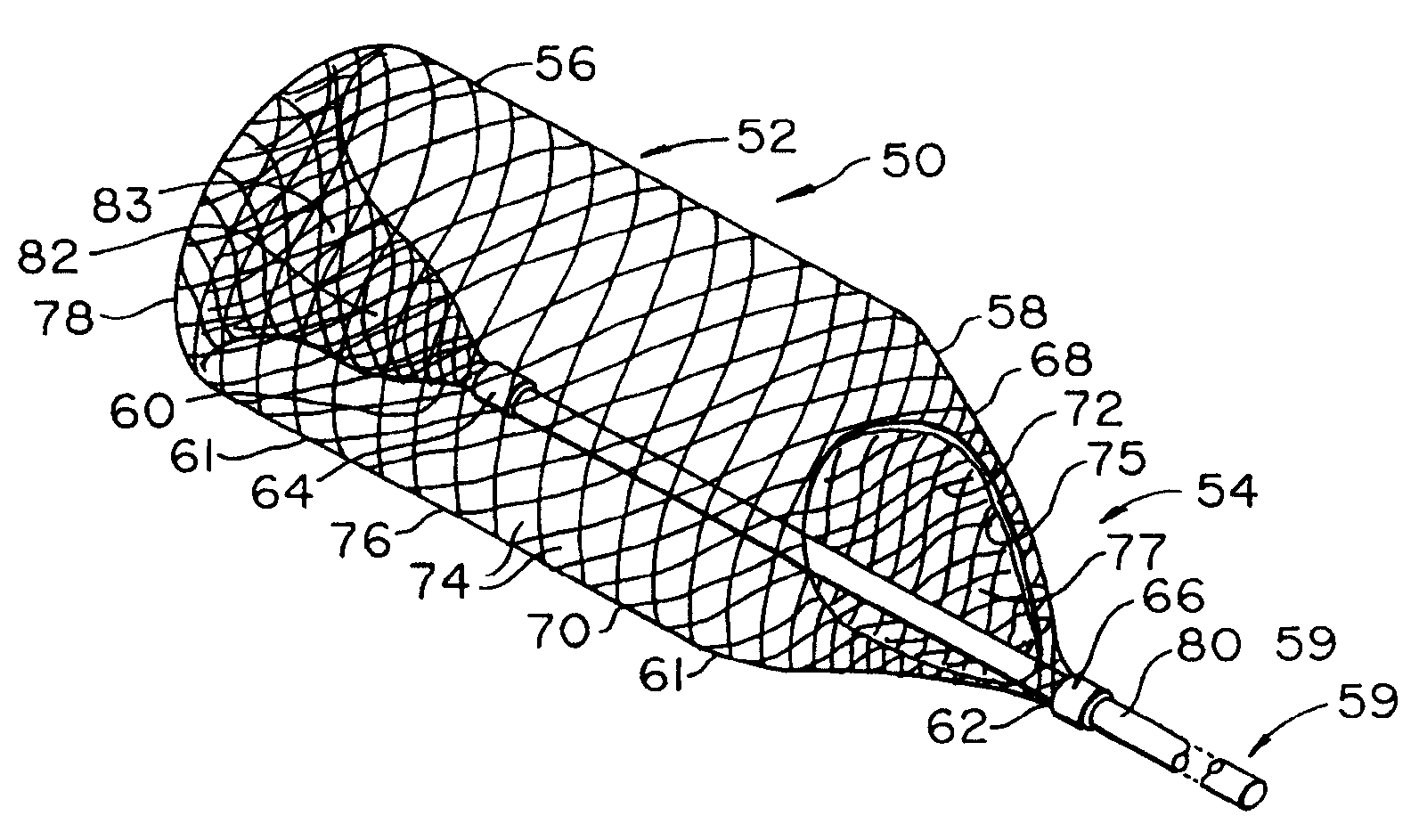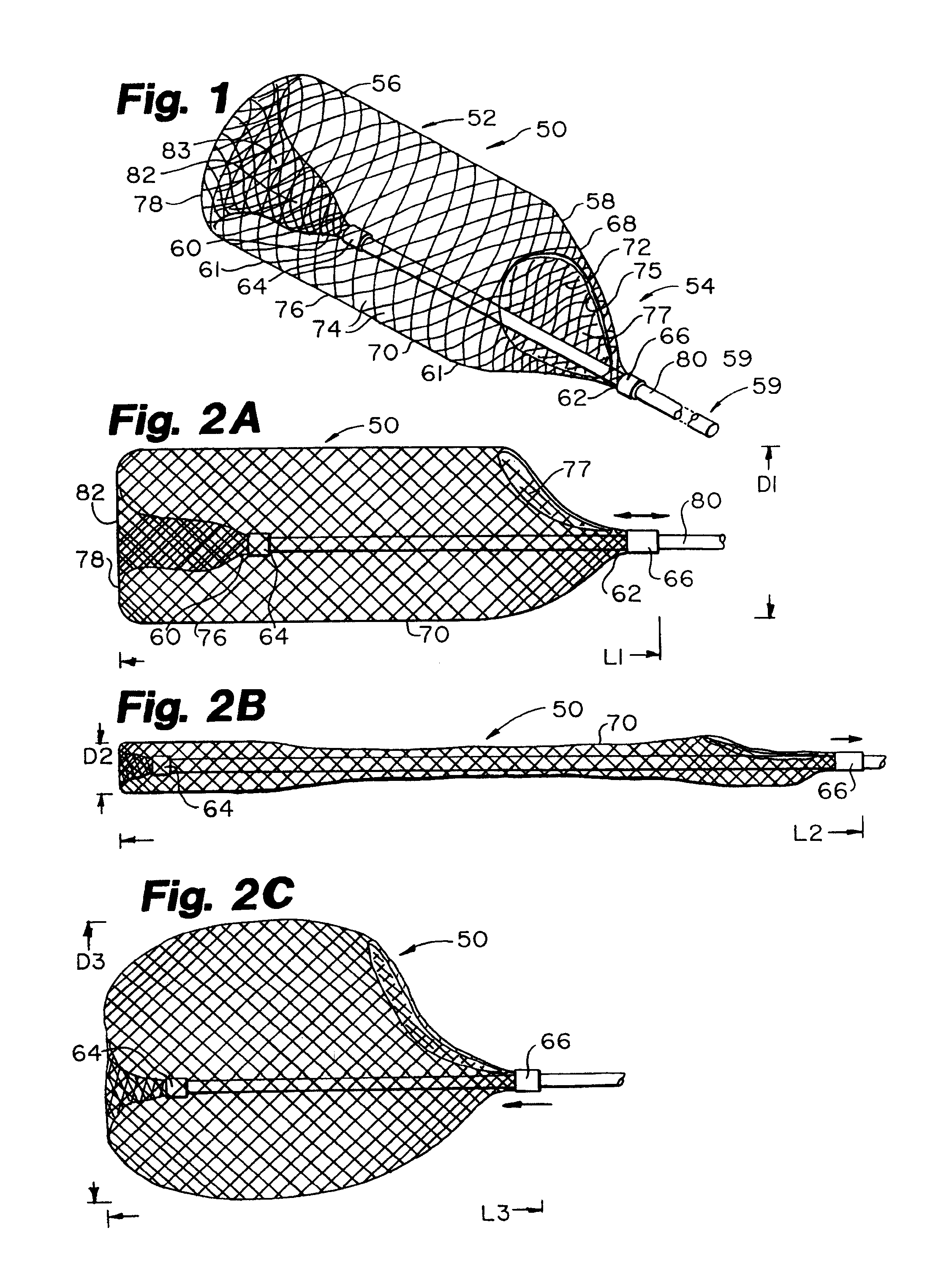Everted filter device
a filter device and eversion technology, applied in the field of medical devices, can solve the problems of pain and amputation, decreased renal function, myocardial infarction, etc., and achieve the effects of small volume, small profile, and increased interior volume of the filter
- Summary
- Abstract
- Description
- Claims
- Application Information
AI Technical Summary
Benefits of technology
Problems solved by technology
Method used
Image
Examples
Embodiment Construction
[0062]The following detailed description should be read with reference to the drawings, in which like elements in different drawings are numbered identically. The drawings, which are not necessarily to scale, depict selected embodiments and are not intended to limit the scope of the invention. Several forms of invention have been shown and described, and other forms will now be apparent to those skilled in art. It will be understood that embodiments shown in drawings and described above are merely for illustrative purposes, and are not intended to limit scope of the invention as defined in the claims which follow.
[0063]FIG. 1 illustrates the distal portion of an everting filter 50. Everting filter 50 may be viewed as having a distal portion 52 and an intermediate portion 54. Distal portion 52 may be further divided into a distal portion distal region 56 and a distal portion proximal region 58. The device can extend proximally to a proximal portion 59.
[0064]Everting filter 50 include...
PUM
 Login to View More
Login to View More Abstract
Description
Claims
Application Information
 Login to View More
Login to View More - R&D
- Intellectual Property
- Life Sciences
- Materials
- Tech Scout
- Unparalleled Data Quality
- Higher Quality Content
- 60% Fewer Hallucinations
Browse by: Latest US Patents, China's latest patents, Technical Efficacy Thesaurus, Application Domain, Technology Topic, Popular Technical Reports.
© 2025 PatSnap. All rights reserved.Legal|Privacy policy|Modern Slavery Act Transparency Statement|Sitemap|About US| Contact US: help@patsnap.com



